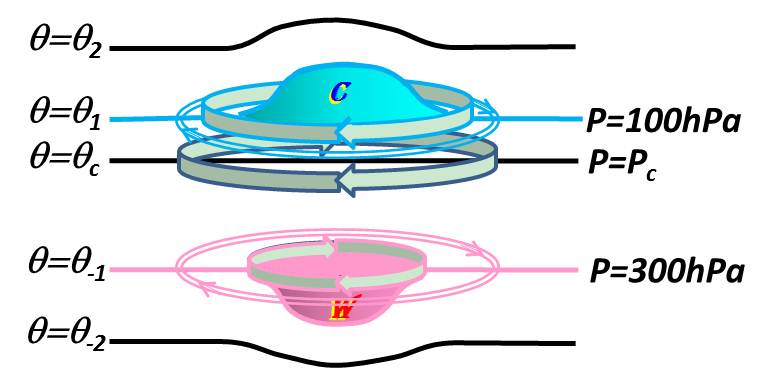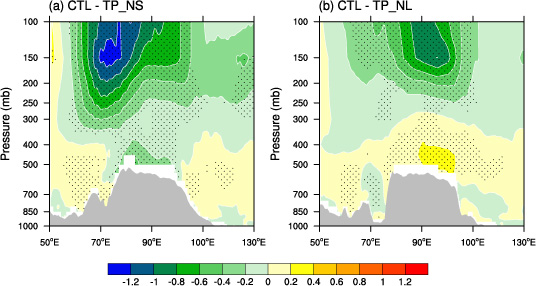State Key Laboratory of Numerical Modeling for Atmospheric Sciences and
Geophysical Fluid Dynamics (LASG)
Institute of Atmospheric Physics, Chinese Academy of Sciences

Vol. 2/No.2 April 2017
[Climate Dynamics] Two types of summertime heating over the Asian large-scaleorography and excitation of potential-vorticity forcing I. Over Tibetan Plateau
It is well-know that the Tibetan Plateau (TP) exerts significant influenceon the circulation systems, weather, and climate of the localand surrounding regions, especially its thermal forcing effect in summer season.Many previous studies have shown that thermal forcing over theTP regulates not only the variability of the precipitation ofthe South Asian monsoon, but also the precipitationof the East Asian monsoon, andeven the global circulation. However, the details of the associateddynamic mechanisms remain unclear.
Recently, based on the theoreticalanalyses and numerical experiments, Prof. Wu and coauthors demonstrated that by changing the configuration of the upper-tropospheric air temperatureand circulation (Figure 1), the two types of heating (surface sensible heatingand atmospheric latent heating) over the TP could generate both minimum absolute vorticity and abnormal potential vorticityforcing near the tropopause (Figure 2), enhance the meridional circulation of the Asian summer monsoon, and produce an eastward-propagating Rossby wave train within the mid-latitude westerly flow. Consequently, the manifestations of these featureswere shown to influence the circulation of the Northern Hemisphere.

Figure 1. Schematic indicating the formation of the area of minimum PVforcing near the tropopause due to thermal forcing over the main TP. Vectorindicates anticyclonic circulation; “C” and blue color denotes coldtemperature, and “W” and pink color denotes warm temperature.

Figure 2. Potential vorticity difference exited by heating of the main body of the TP (unit: PVU=10-6 K m2 s-1 kg-1). (a) Control run minus TP_NS (no surface sensible heating) along 35°N; (b) Control run minus TP_NL (no atmospheric latent heating) along 32.5°. Dotted regions denote statistical significance of the difference above the 95% level.Citation:
Wu, G. X., H. F. Zhuo, Z. Q. Wang, and Y. M. Liu, 2016: Two types of summertime heating over the Asian large-scale orography and excitation of potential-vorticity forcing I. Over Tibetan Plateau. Sci. China: Earth Sci., 59, 1996–2008, doi: 10.1007/s11430-016-5328-2.
Download:https://link.springer.com/article/10.1007/s11430-016-5328-2?view=classic
Contact: Prof. Yimin Liu, lym@lasg.iap.ac.cn
E-mail: lasg_newsletter@lasg.iap.ac.cn
Editors: Chuanyi Wang (wangcy@lasg.iap.ac.cn), Kangjun Chen(ckj@lasg.iap.ac.cn)